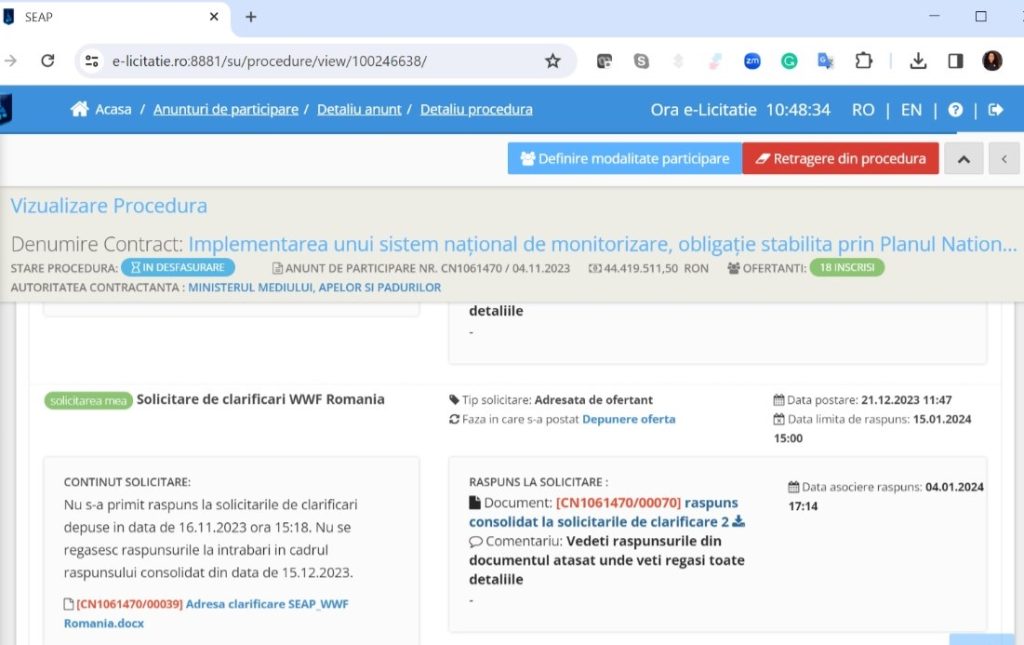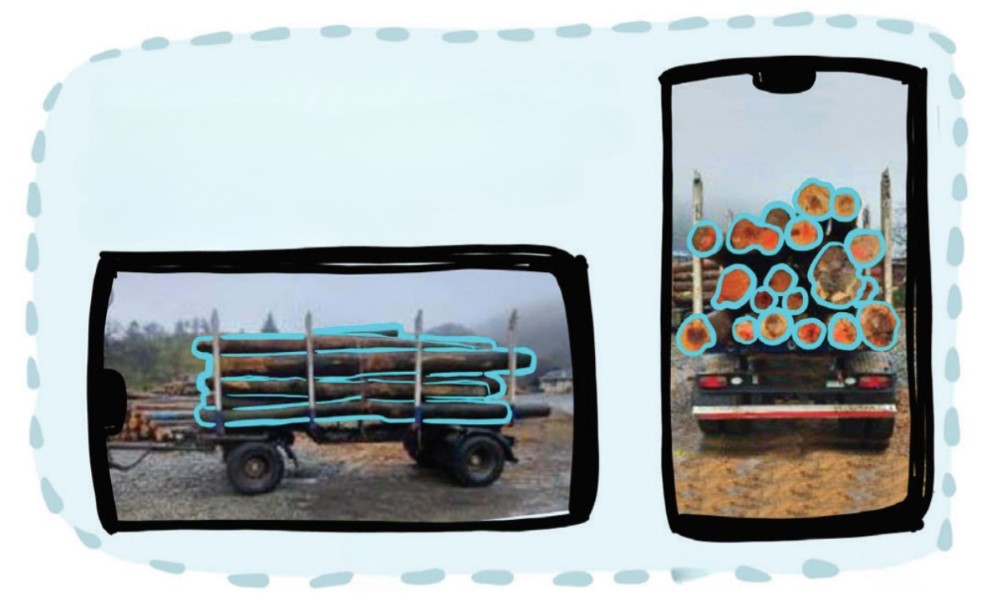The Digital Fingerprint of timber transports, the solution supported by WWF to bring simplicity, transparency and efficiency in fighting illegal logging, will finally come to life through a project run by the Environment Ministry, within the National Recovery and Resilience Plan. The terms of reference and the Procurement Service's response to WWF's clarification requests clearly show that the national video monitoring system for timber transports is designed to use artificial intelligence in order to identify the uniqueness of timber transports, as well as to quickly determine quantities based on recorded images.
Offers are to be submitted by January 15.
“It is an extraordinary undertaking! Authorities have taken a decisive step forward to provide an adequate response to the current challenges. Romania will use modern technologies to develop a high-performance timber traceability system, a global benchmark for preventing and fighting illegal timber trade.”
Radu Vlad, manager of forestry programs at WWF-Romania
Once developed and made operational in SUMAL 3.0, this innovative concept will practically eliminate the possibility of multiple transports with the same origin documents, of fictitious transports or of fraudulently declaring the quantities transported, which is mostly used to introduce illegally harvested wood to the market.
Such an IT system will allow the preliminary, automated check of the data entered in SUMAL, will eliminate the subjectivity of the human factor and will make room for automatic alerts, thus strengthening the preventive role of the controlling system. The new monitoring report, carried out by WWF between October and November 2023, proves the relevance of this tool.
Here are some relevant provisions included in the Terms of Reference and in the response received by WWF, following our clarification requests:

- The Environment Ministry wants to develop a system assisted by AI (artificial intelligence), which should “be able to estimate, with an acceptable margin of error, the volume loaded on the vehicle; any discrepancy between the load and the amount recorded in the notice is to be indicated”. In this respect, a tolerance of “up to 20% of the volume registered in the notice” is accepted for the beginning, but the system has to be designed to reduce estimation errors through “machine learning”.
- The delivered system will have to “be able to extract these photos and to associate them with the database of images captured by the video monitoring system, thus allowing the automatic analysis of the elements declared in the application with those subsequently recorded in the field”. By implementing this system, the process of “verifying and ensuring compliance between declared and objective data is facilitated, contributing to a more efficient and transparent management of transports and loads”.
- The developed system should be able to “use the data from SUMAL to create relevant connections and ensure a comprehensive understanding of the events recorded on the video cameras, with the possibility of transforming the reports into appropriate alerts”.
We support this project and continue to offer our support to develop an efficient Digital Fingerprint of timber transports.

